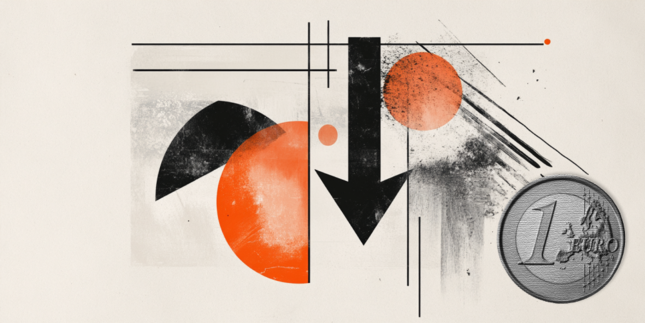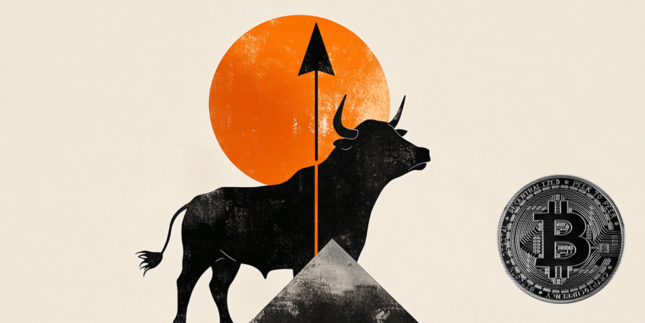- United Kingdom's annual CPI rose 2.8% in February vs. 2.9% estimate.
- British inflation jumped to 0.4% MoM in February vs. 0.5% forecast.
- GBP/USD holds losses below 1.2950 after UK CPI inflation data.
The United Kingdom (UK) Consumer Price Index (CPI) rose 2.8% year-over-year (YoY) in February, following January’s 3.0% acceleration, according to data released by the Office for National Statistics (ONS) on Wednesday.
Markets expected a 2.9% growth in the reported period. The reading remained well above the Bank of England’s (BoE) 2% target.
The core CPI (excluding volatile food and energy items) increased at an annual rate of 3.5% % in the same period, compared to a 3.7% jump in January, coming in below the market forecast of 3.6%.
Services inflation stayed at 5% YoY in February.
Meanwhile, the monthly UK CPI inflation rebounded to 0.4% in February from -0.1% in January. Markets estimated a 0.5% reading.
GBP/USD reaction to the UK CPI inflation data
The UK CPI data exerts a mild downward pressure on the Pound Sterling, sending GBP/USD 0.15% lower on the day below 1.2950, as of writing.
British Pound PRICE Today
The table below shows the percentage change of British Pound (GBP) against listed major currencies today. British Pound was the weakest against the New Zealand Dollar.
| USD | EUR | GBP | JPY | CAD | AUD | NZD | CHF | |
|---|---|---|---|---|---|---|---|---|
| USD | 0.07% | 0.16% | 0.39% | -0.11% | -0.25% | -0.36% | 0.13% | |
| EUR | -0.07% | 0.09% | 0.29% | -0.18% | -0.31% | -0.46% | 0.06% | |
| GBP | -0.16% | -0.09% | 0.23% | -0.27% | -0.40% | -0.52% | -0.00% | |
| JPY | -0.39% | -0.29% | -0.23% | -0.50% | -0.67% | -0.76% | -0.25% | |
| CAD | 0.11% | 0.18% | 0.27% | 0.50% | -0.11% | -0.25% | 0.28% | |
| AUD | 0.25% | 0.31% | 0.40% | 0.67% | 0.11% | -0.12% | 0.39% | |
| NZD | 0.36% | 0.46% | 0.52% | 0.76% | 0.25% | 0.12% | 0.51% | |
| CHF | -0.13% | -0.06% | 0.00% | 0.25% | -0.28% | -0.39% | -0.51% |
The heat map shows percentage changes of major currencies against each other. The base currency is picked from the left column, while the quote currency is picked from the top row. For example, if you pick the British Pound from the left column and move along the horizontal line to the US Dollar, the percentage change displayed in the box will represent GBP (base)/USD (quote).
This section below was published at 03:15 GMT as a preview of the UK Consumer Price Index (CPI) inflation data.
- The United Kingdom’s Office for National Statistics will release the February CPI data on Wednesday.
- The annual UK headline and core CPI inflation are set to ease slightly in February.
- The UK CPI data could impact the direction of the Pound Sterling and the BoE’s interest rates.
The United Kingdom’s (UK) Office for National Statistics (ONS) will publish the highly anticipated Consumer Price Index (CPI) data for February on Wednesday at 07:00 GMT.
The Pound Sterling (GBP) could experience intense volatility following the UK CPI inflation report, as it is likely to alter the market’s expectations for the Bank of England’s (BoE) future interest rate cuts.
What to expect from the next UK inflation report?
The UK Consumer Price Index is expected to increase by 2.9% year-over-year (YoY) in February, following a 3% growth in January.
The reading is expected to remain distant from the BoE’s 2.0% target.
Core CPI inflation, which excludes energy, food, alcohol, and tobacco prices, is expected to be slightly lower at 3.6% (YoY) in February, down from January’s 3.7%.
According to a Bloomberg survey of economists, official data is expected to show that service inflation will likely ease to 4.9% in February after jumping to 5% in January.
Meanwhile, the British monthly CPI is expected to rise by 0.5% in the same period, compared to the previous decline of 0.1%.
Previewing the UK inflation data, TD Securities analysts noted: “Inflation is slated to cool slightly, with headline dropping to 2.8% (consensus: 2.9%; prior: 3.0%). We also expect core and services to come in lower, at 3.6% YoY (prior: 3.7% YoY and 4.9% YoY (prior: 5.0% YoY), respectively. While all these numbers are softer than in Jan, the deceleration remains too slow for the Monetary Policy Committee’s (MPC) preferences.”
How will the UK Consumer Price Index report affect GBP/USD?
At its monetary policy meeting earlier this month, the Bank of England (BoE) held interest rates at 4.5% on Thursday, warranting caution against expectations that they would cut rates over its next few meetings amid heightened uncertainty over the UK and global economies.
“However, the 8-1 vote split to stay on hold was a hawkish surprise and triggered an upward adjustment to UK rate expectations. The swaps market continues to price in 50 bps of easing over the next 12 months but has fully priced out any odds of an additional 25 bps cut following the less dovish MPC vote split,” BBH analysts noted.
Therefore, an upside surprise to the headline and core inflation data is needed to reaffirm the BoE’s prudent approach and increased bets for fewer rate cuts this year. In such a case, the Pound Sterling uptrend is expected to resume, lifting GBP/USD back toward the 1.3050 barrier. Conversely, softer-than-expected inflation readings will likely alleviate UK economic concerns, reviving expectations for aggressive BoE rate cuts and extending GBP/USD correction from four-month highs.
Any reaction to the UK inflation report is likely to be short-lived, given the upcoming British Spring Budget Statement, scheduled for later on Wednesday.
Dhwani Mehta, Asian Session Lead Analyst at FXStreet, offers a brief technical outlook for the major and explains: “GBP/USD is holding above all major daily Simple Moving Averages (SMA) heading into the UK CPI showdown, with the 14-day Relative Strength Index (RSI) momentum indicator in the daily chart holding firm above 50. The 50-day SMA and the 100-day SMA Bull Cross, confirmed on Monday, remains in play and acts as a tailwind for the pair.”
Dhwani adds: “However, the pair needs acceptance above the 1.3000 threshold to initiate a sustained uptrend toward the November 2024 high of 1.3048. The next relevant resistance is aligned at the 1.3100 round level. Alternatively, the immediate support is seen at the 21-day SMA at 1.2863, below which the critical 200-day SMA at 1.2800 will come into play. A sustained break below this level will intensify the selling pressure, potentially leading to a test of the 1.2750 psychological level.”
Inflation FAQs
Inflation measures the rise in the price of a representative basket of goods and services. Headline inflation is usually expressed as a percentage change on a month-on-month (MoM) and year-on-year (YoY) basis. Core inflation excludes more volatile elements such as food and fuel which can fluctuate because of geopolitical and seasonal factors. Core inflation is the figure economists focus on and is the level targeted by central banks, which are mandated to keep inflation at a manageable level, usually around 2%.
The Consumer Price Index (CPI) measures the change in prices of a basket of goods and services over a period of time. It is usually expressed as a percentage change on a month-on-month (MoM) and year-on-year (YoY) basis. Core CPI is the figure targeted by central banks as it excludes volatile food and fuel inputs. When Core CPI rises above 2% it usually results in higher interest rates and vice versa when it falls below 2%. Since higher interest rates are positive for a currency, higher inflation usually results in a stronger currency. The opposite is true when inflation falls.
Although it may seem counter-intuitive, high inflation in a country pushes up the value of its currency and vice versa for lower inflation. This is because the central bank will normally raise interest rates to combat the higher inflation, which attract more global capital inflows from investors looking for a lucrative place to park their money.
Formerly, Gold was the asset investors turned to in times of high inflation because it preserved its value, and whilst investors will often still buy Gold for its safe-haven properties in times of extreme market turmoil, this is not the case most of the time. This is because when inflation is high, central banks will put up interest rates to combat it. Higher interest rates are negative for Gold because they increase the opportunity-cost of holding Gold vis-a-vis an interest-bearing asset or placing the money in a cash deposit account. On the flipside, lower inflation tends to be positive for Gold as it brings interest rates down, making the bright metal a more viable investment alternative.
Information on these pages contains forward-looking statements that involve risks and uncertainties. Markets and instruments profiled on this page are for informational purposes only and should not in any way come across as a recommendation to buy or sell in these assets. You should do your own thorough research before making any investment decisions. FXStreet does not in any way guarantee that this information is free from mistakes, errors, or material misstatements. It also does not guarantee that this information is of a timely nature. Investing in Open Markets involves a great deal of risk, including the loss of all or a portion of your investment, as well as emotional distress. All risks, losses and costs associated with investing, including total loss of principal, are your responsibility. The views and opinions expressed in this article are those of the authors and do not necessarily reflect the official policy or position of FXStreet nor its advertisers. The author will not be held responsible for information that is found at the end of links posted on this page.
If not otherwise explicitly mentioned in the body of the article, at the time of writing, the author has no position in any stock mentioned in this article and no business relationship with any company mentioned. The author has not received compensation for writing this article, other than from FXStreet.
FXStreet and the author do not provide personalized recommendations. The author makes no representations as to the accuracy, completeness, or suitability of this information. FXStreet and the author will not be liable for any errors, omissions or any losses, injuries or damages arising from this information and its display or use. Errors and omissions excepted.
The author and FXStreet are not registered investment advisors and nothing in this article is intended to be investment advice.
Recommended content
Editors’ Picks

Gold falls amid a possible de-escalation of US-China tensions Premium
Gold pulled back from its all-time high of $3,500 per troy ounce reached earlier on Tuesday, as a resurgent US Dollar and signs of easing tensions in the US–China trade dispute appeared to draw sellers back into the market.

EUR/USD retreats to daily lows near 1.1440
EUR/USD loses the grip and retreats to the 1.1440 zone as the Greenback’s rebound now gathers extra steam, particulalry after some positive headlines pointing to mitigating trade concerns on the US-China front on Tuesday.

GBP/USD deflates to weekly lows near 1.3350
GBP/USD loses further momentum and recedes to the 1.3350 zone on Tuesday, or two-day troughs, all in response to the frmer tone in the US Dollar and encouraging news from the US-China trade scenario.

3% of Bitcoin supply in control of firms with BTC on balance sheets: The good, bad and ugly
Bitcoin disappointed traders with lackluster performance in 2025, hitting the $100,000 milestone and consolidating under the milestone thereafter. Bitcoin rallied past $88,000 early on Monday, the dominant token eyes the $90,000 level.

Five fundamentals for the week: Traders confront the trade war, important surveys, key Fed speech Premium
Will the US strike a trade deal with Japan? That would be positive progress. However, recent developments are not that positive, and there's only one certainty: headlines will dominate markets. Fresh US economic data is also of interest.

The Best brokers to trade EUR/USD
SPONSORED Discover the top brokers for trading EUR/USD in 2025. Our list features brokers with competitive spreads, fast execution, and powerful platforms. Whether you're a beginner or an expert, find the right partner to navigate the dynamic Forex market.



